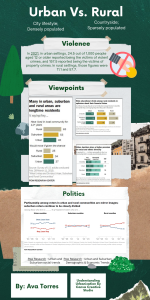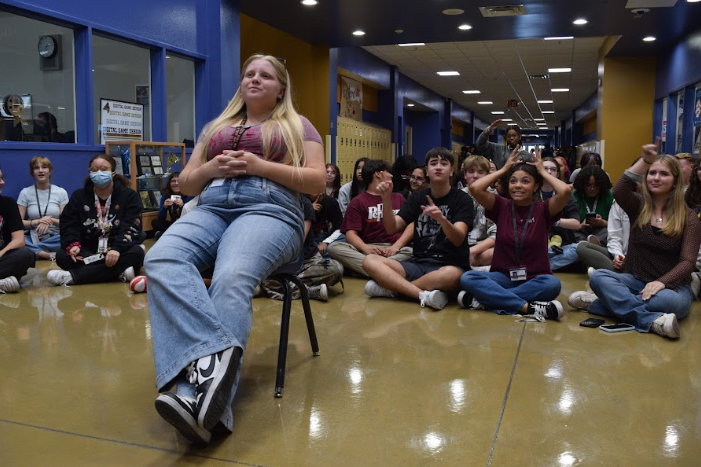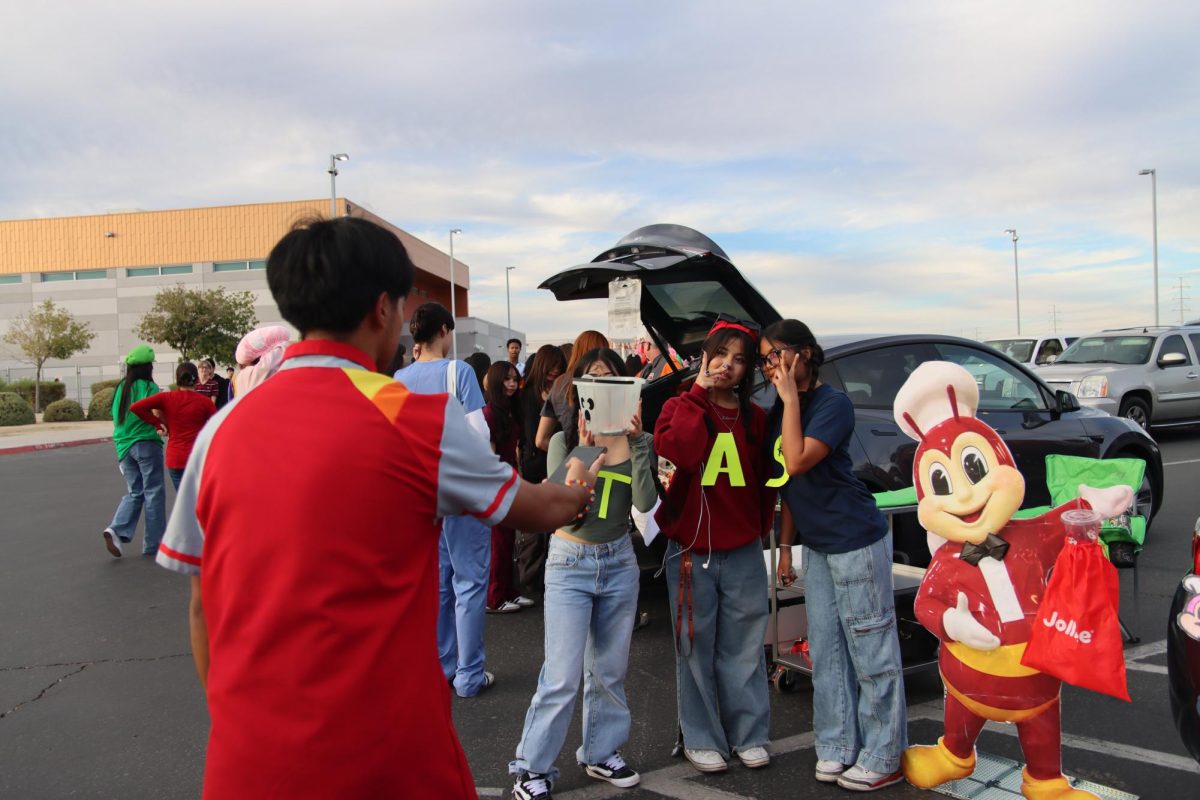On July, 13 Los Angeles teens were given the opportunity to travel to a foreign area and spread their own culture while learning about others’ through an initiative called the American Exchange Project. These LA teens weren’t traveling to other continents or countries, but to the remote lands of Arkansas, Ohio, South Dakota, and other rural states to mend the cultural and regional divides in the United States today. Students who participated in the program said they confronted stereotypes, both about them and the people they were getting to know, while learning how to understand people beyond their superficial differences.
From politics to social trends, there is massive variation within our country’s cultural fabric, especially when taking into account the fact that the United States is nearly as large as the entire continent of Europe. Examples of America’s divide include the U.S Capitol Riot where unhappy voters stormed the foundation of our government and the upcoming 2024 election where.
“We are probably more polarized than we have been since the Civil War and it’s not like the Civil War, where it was regional by the South and North,” US History teacher Benjamin LaCombe said. “Now, we’re divided by rural and urban… You can see red states with blue dots of where you have the urban area, which tends to be Democrats, right? But then in California, we have these huge areas where it’s Republican and instead of a small dot, it’s a huge County.”
These differences in lifestyle and upbringing often lead to a lack of perspective and understanding, further contributing to an “us vs. them” mindset. One dividing issue between rural and urban areas is gun control. A 2017 Pew Research survey showed that “More than eight-in-ten rural gun owners (82%) say the right to own guns is essential to their personal sense of freedom, compared with 59% of gun owners in urban areas.”
“You have a lot of gun violence in urban areas, and a lot of people calling for gun restrictions and regulation, urban communities would immediately push back on that and say, ‘What about hunting?’” US History teacher Trey Takahashi said. “‘What about when I’m going for a walk in rural Alaska and I run into a grizzly bear?’ and sometimes, when you have people going off on both sides, they don’t recognize the other side’s concerns… instead of meeting in a middle ground or kind of talking about those differences and issues, there’s just a lot of butting heads between those different politics.”
Regional stereotypes also contribute to division as they reinforce misunderstandings between different areas.
“I think we are dependent on the media to give us ideas of what rural and urban people are like, and unfortunately, what we see on social media or any type of media are those extreme stereotypes,” LaCombe said. “Studies have shown that the southern accent is not taken seriously as much and somebody who speaks with one is less likely to get hired if they have a southern accent. Studies have shown that people will automatically think they’re like a racist or whatnot.”
That’s why the American Exchange Project sees a need for cultural exchange within the country: to challenge the stereotypes often perpetuated by simplified versions of people in certain areas.
“[Stereotyping] is like taking away their first impression,” senior Tyrah Lamay said. “I’m from Hawaii, so when I first moved here, I was kind of teased because I was a little behind in school [due to the different curriculum]. It was like ‘Oh, she’s from there and she’s behind in school so she’s not as smart as the people from the city.’”
It’s important to consider, however, that there are real differences from region to region. According to Pew Research, rural areas are 13% more likely to have high school graduates compared to urban areas, but on the other hand, urban areas are 16% more likely to have residents with bachelor’s degrees. Additionally, rural areas make significantly lower earnings than urban areas.
Many are skeptical of the effectiveness of programs, such as the American Exchange Program, especially with regards to mending some of the most divisive issues where a middle ground is more difficult to reach like abortion and gun control.
“You know, you can find so many commonalities with people, but then when you start finding things that are existential threats to trans people or to gay people,” Social Studies Teacher Jessica Kelly said. “It’s almost like how do you even bridge that gap?”
Urban and rural diversity also play a part in these barriers. According to Pew Research, rural areas have 79% non-hispanic white population as opposed to 44% in urban areas. Programs like AEP have good intentions and even modern technology is seeking to bridge those gaps.
“I feel like by looking at social media and seeing all these different people in a row, a lot of variety, you are able to see that not everyone’s the same and that’s okay,” junior Rachel Zenkell said. “You realize that those stereotypes don’t apply to everyone and while I feel like new [stereotypes] come up, the old ones kind of die down.”

![In a world of varying cultures and lifestyles, America shines as a melting pot of ideas and viewpoints, but divides begin when viewpoints differ so much that individuals can’t see the other side’s argument. According to a 2024 Ipsos survey, “81% of Americans say America is more divided than united.” “I think when you consider urban areas where you’re a lot closer to people and surrounded by so many people, everyone is constantly changing their values,” senior Chris Nikolic said. “But if you’re living in a very confined area, you don’t really see that many people so you’re staying in the same bubble rather than like [Las Vegas] where a lot of people come and visit, so you always experience new lifestyles. ”](https://southwestshadow.com/wp-content/uploads/2024/09/Urban_vs._Rural-1-1200x900.png)
![Weighing her options, senior Allyana Abao decides between going on a practice drive or calling an Uber. Though unlicensed, Abao has considered driving to be a significant milestone of teen independence despite alternatives that provide much easier solutions.
“You're able to be independent and not rely on others,” Abao said. “You're able to get a job, get things that you need, go places you need to go. I have so many places that I want to go to and I ask [my family] for so much. I want to be independent to where they know that I can do things on my own, so they know that they don't have to be there for me.”](https://southwestshadow.com/wp-content/uploads/2025/10/IMG_2922-1200x900.jpg)
![Looking at the board, former BSU secretary Christina Altaye begins to prepare for BSU’s second year of Club Feud. This year, “Are You Smarter Than a Ninth Grader?” will be replacing this event. “I think it’s a fun change [to Club Feud],” BSU Activities Director Hellen Beyene said. “[I think] it’s always fun to do something new and different.”](https://southwestshadow.com/wp-content/uploads/2025/10/Screenshot-2025-09-29-11.06.43.png)

!["I will be attending Trunk or Treat [for FCCLA]" junior Crystal Li said. "We're gonna use Mr. Harbeson's car, and we will be [hosting three different activities]."](https://southwestshadow.com/wp-content/uploads/2025/10/IMG_0980-1200x900.png)


![Grabbing her phone to take a photo, sophomore Vanessa Ta sits down on a bed and takes a couple photos to post on her social media. “I just really [feel] that my favorite cosplayer is everyone lowkey, because I get to see people’s creativity,” Ta said. “I get to see how skilled and talented they are.”](https://southwestshadow.com/wp-content/uploads/2025/10/55A1FC60-BE63-4F24-9B78-65194336319E-e1760926431267.jpg)
![In his fifth period World History class, Thur works with his students individually, helping them as they sort through notes and assorted historical documents. “I’m always willing to try something new,” Thur said. “Some of my best ideas that I’ve received over the years are from students. This year I’m trying out stations for the first time and kids are rotating through and it’s working. Well, some things are [working], I’ve still got to work out the kinks with it. The kids change, why shouldn’t I change too?”](https://southwestshadow.com/wp-content/uploads/2025/10/IMG_8991-1200x800.jpg)
![Fast food has not stayed the same principle of “sit down, order, and get food,” but has turned into a process with multiple layers and complexity. This is largely due to the integration of automation in every aspect of dining. “I'm not that knowledgeable on it, but I've seen videos on TikTok, I'm not really concerned—it doesn’t seem that smart,” senior Dallas Evertt said. “When [some people are just ordering] 18,000 water cups, it sounds really dumb. There was no way [the AI] was gonna put down 18,000 water cups—and that just shows how it’s not going to take anybody’s job soon.”](https://southwestshadow.com/wp-content/uploads/2025/10/Dominante-Image-1200x675.png)
![Squaring up to a practice dummy, sophomore Cypher Andres prepares to throw a punch. Dummies are regularly used to help him prepare certain hits to take his opponents down. “[Boxing dummies help me practice] because it’s basically a model of the body,” Andres said. “It helps with accuracy, such as pressure points behind the ear, and a clean liver shot can end the fight.”](https://southwestshadow.com/wp-content/uploads/2025/10/IMG_5728-e1759850486200-1200x864.jpg)
![Swaying and preparing to toss the tennis ball, Dylan Grove practices serving. Grove had been training in preparation for her upcoming matches against Chaparral and Doral Red Rock. “[Both teams are] both very tough opponents, but I am ready for whatever gets thrown my way,” Grove said.](https://southwestshadow.com/wp-content/uploads/2025/10/image-1200x900.png)